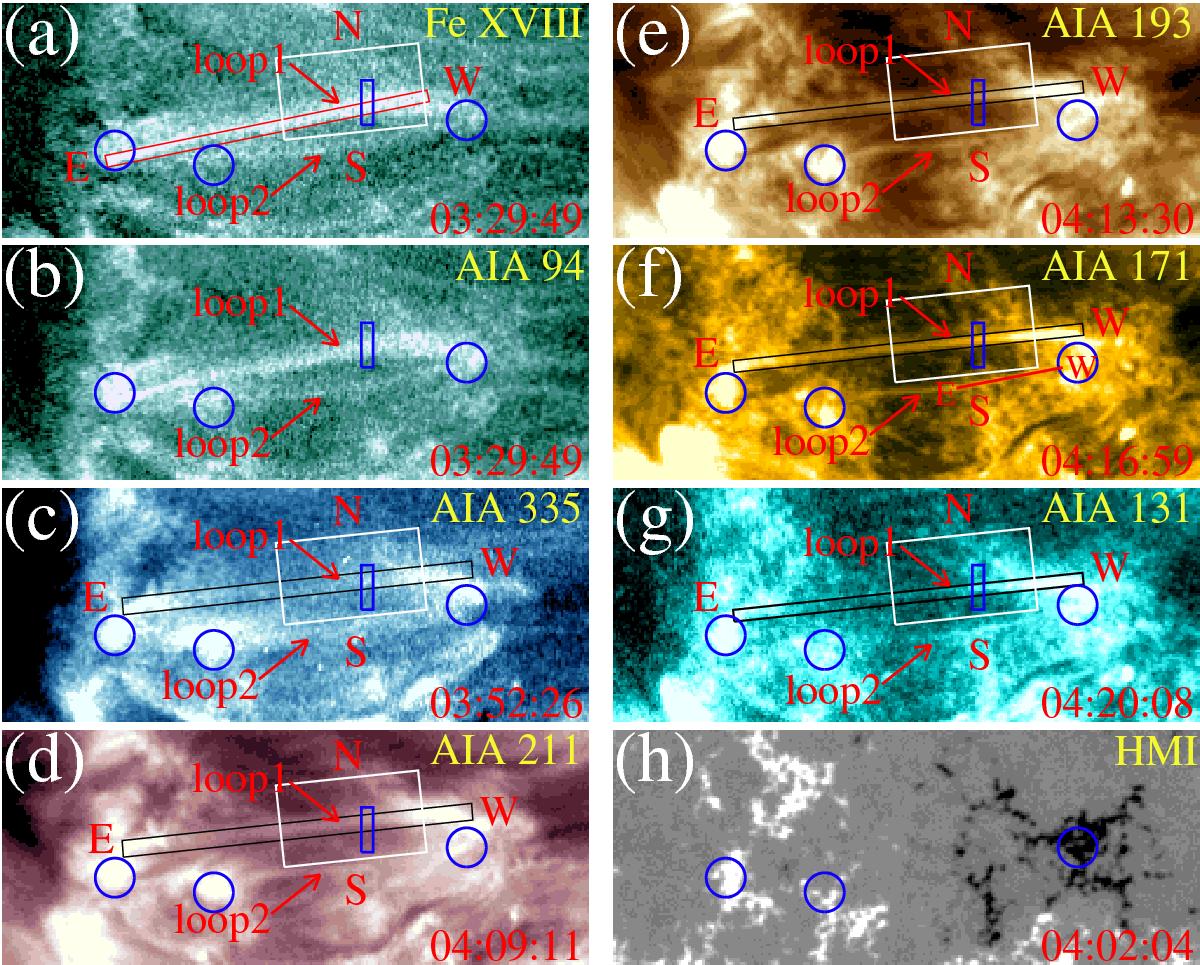Heating and cooling of coronal loops observed by SDO
Abstract
Context. One of the most prominent processes to have been suggested as heating the corona to well above 106 K builds on nanoflares, which are short bursts of energy dissipation.
Aims: We compare observations to model predictions to test the validity of the nanoflare process.
Methods: Using extreme UV data from AIA/SDO and HMI/SDO line-of-sight magnetograms, we study the spatial and temporal evolution of a set of loops in active region AR 11850.
Results: We find a transient brightening of loops in emission from Fe xviii forming at about 7.2 MK, while at the same time these loops dim in emission from lower temperatures. This points to a fast heating of the loop that goes along with evaporation of material that we observe as apparent upward motions in the image sequence. After this initial phase lasting some 10 min, the loops brighten in a sequence of AIA channels that show progressively cooler plasma, indicating that this cooling of the loops lasts about one hour. A comparison to the predictions from a 1D loop model shows that this observation supports the nanoflare process in (almost) all aspects. In addition, our observations show that the loops get broader while getting brighter, which cannot be understood in a 1D model.
- Publication:
-
Astronomy and Astrophysics
- Pub Date:
- November 2015
- DOI:
- 10.1051/0004-6361/201526912
- arXiv:
- arXiv:1509.04510
- Bibcode:
- 2015A&A...583A.109L
- Keywords:
-
- Sun: corona;
- Sun: UV radiation;
- Sun: atmosphere;
- Sun:;
- activity;
- Astrophysics - Solar and Stellar Astrophysics
- E-Print:
- 9 pages, 7 figures, accepted by A&
